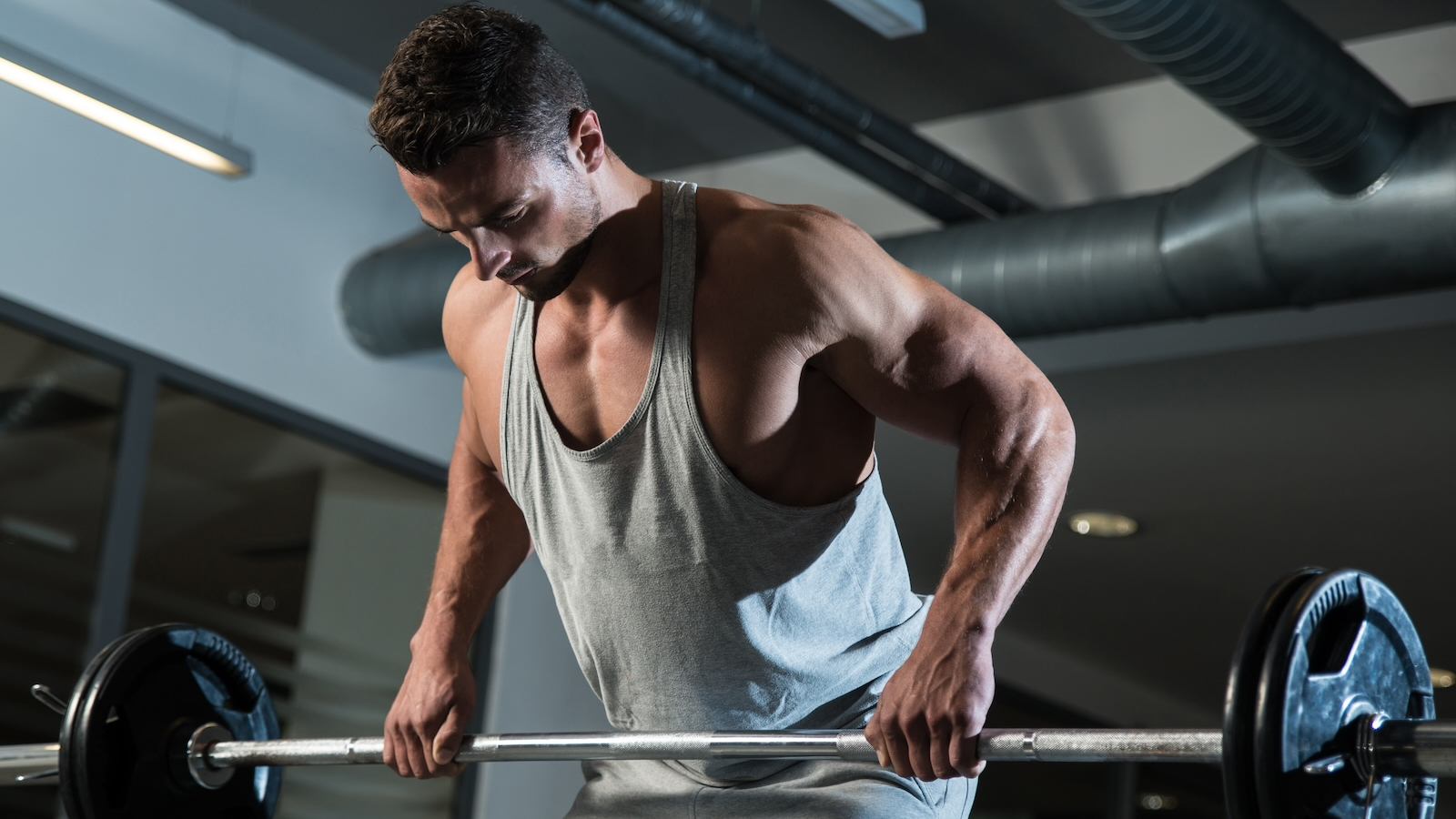It’s no secret that constructing a well-developed again includes quite a lot of pulling workout routines and sufficient protein to reinforce your strength- and muscle-building efforts. Whilst there are other routes you’ll be able to take to reach that sculpted glance, the most efficient again workout routines revolve round a vintage pull-day staple: the row.
The choice of row permutations to make a choice from might really feel overwhelming, however you’ll be able to’t cross flawed with two of one of the best choices: the chest-supported row and the bent-over row. However what reigns ultimate within the combat between a bench-based again builder and a freestanding barbell motion?
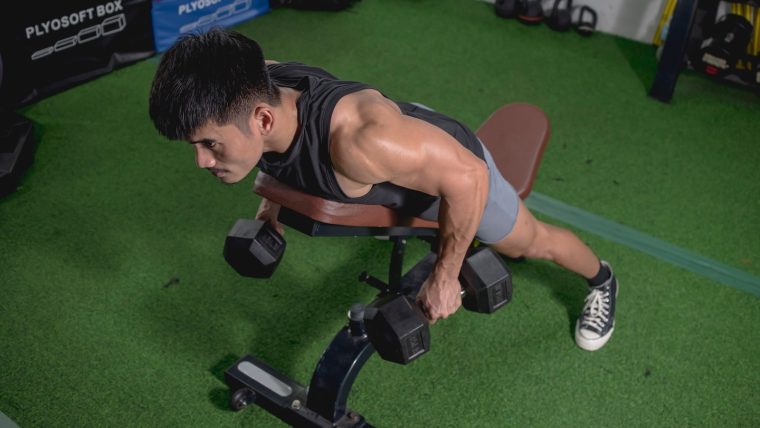
We’ll dive deeper into their variations and similarities, smash down easy methods to carry out each and every one safely, and speak about the advantages and disadvantages of each so you’ll be able to get essentially the most bang to your greenback right through your subsequent pull-day consultation.
Desk of Contents
Key Variations
- The bent-over row comes to all of the posterior chain and calls for important core activation. Then again, the chest-supported row recruits your upper-back muscular tissues whilst most commonly taking away your decrease 1/2 from the equation.
- The chest-supported row is typically more secure for each inexperienced persons and complicated lifters because the weight bench supplies balance and coverage to your backbone. In the meantime, the loss of help with a bent-over row can restrict the person’s talent to correctly interact the again since they’re directing effort to stabilize their physique in a bent-over place.
- In contrast to the chest-supported row, the bent-over model immediately carries over to different actions just like the deadlift and excellent mornings, because it teaches you easy methods to hip-hinge appropriately.
[Related: Lat Pulldown vs. Pull-Up: The Battle for a Bigger Back]
Key Similarities
- Each row permutations essentially paintings the latissimus dorsi (lats), making both motion an unbelievable selection to your again or pull-day exercise.
- Your grip power will probably be put to the check with each and every workout. Rowing will let you expand a more potent grip (and forearms), which is able to repay when appearing workout routines like cleans, snatches, and shrugs. (In the event you’re looking to goal your again muscular tissues and your grip power is a proscribing issue, take a look at our record of the most efficient lifting straps.)
- The bent-over row and the chest-supported row can lend a hand upload thickness and total dimension on your upper- and mid-back, particularly in case you range your grip to focus on explicit spaces.
Muscular tissues Labored
Just like the bent-over row, the chest-supported row comes to a couple of upper-back muscular tissues — essentially the latissimus dorsi (lats), trapezius (traps), and rhomboids. Your lats, which might be the biggest again muscular tissues, are the principle mover right through any row variation. In the meantime, your traps lend a hand stabilize your scapula, and the rhomboids play a very powerful function in shoulder stabilization.
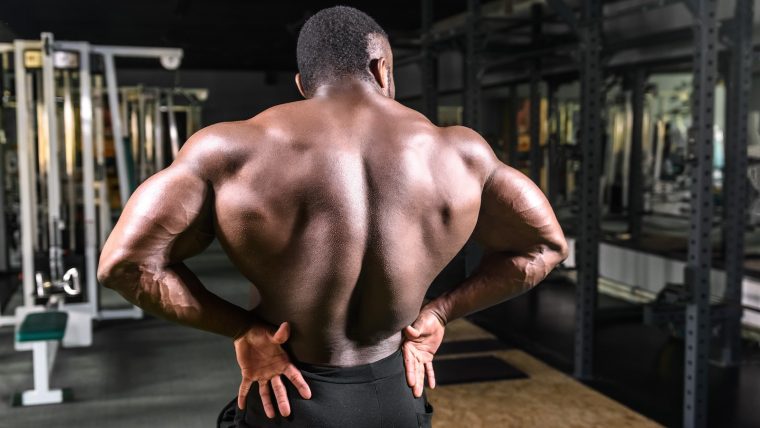
Along with your lats, traps, and rhomboids, your posterior deltoids — the again shoulder muscular tissues that connect on your shoulder blades — additionally act as top movers right through the bent-over row and the chest-supported row. Plus, each row permutations contain considerable biceps activation, as this two-headed muscle assists with flexing your forearm and elbow. As you retract your shoulder blades right through a row, your biceps lend a hand your arm bend on the most sensible of the motion. You’ll be able to additionally building up the stimulus by way of the usage of a supinated (palms-up) grip.
Alternatively, the bent-over row comes to a number of muscle teams and joint constructions that the chest-supported model doesn’t. Maximum particularly, this multi-joint motion recruits your hamstrings, glutes, and spinal erectors to stop any rounding as you pull the barbell towards your physique from a hip-hinge place. General, your legs and core have to place in an equivalent quantity of effort as your higher physique to accomplish this workout safely and successfully.
[Related: What Muscles Do Push-Ups Work? Get More Out of This Timeless Exercise]
When to Do the Chest-Supported Row
From time to time, opting for a chest-supported row merely makes extra sense. Whether or not you’re new to lifting, therapeutic from an damage, or having a look to focus on explicit portions of your again, listed below are a couple of eventualities the place a chest-supported row works highest:
You’re a Novice
Simply began power coaching? Reasonably than chance getting harm appearing a extra technical motion, stick to the model higher fitted to inexperienced persons. The chest-supported row teaches you easy methods to interact your core and best possible your pulling methodology from a seated place that helps to keep your backbone solid.
Whilst you could have first of all lighter dumbbells, you’ll be able to briefly building up the burden in case you stay in step with your way. Plus, the chest-supported row will provide you with a possibility to be told how converting variables akin to your grip, the attitude of the load bench, and time beneath rigidity can have an effect on your effects. As an example, an overhand (pronated) grip will result in extra rear delt and upper-back activation since your elbows pop out out of your physique. An underhand (supinated) grip helps to keep the elbows nearer, forcing your traps and biceps to step up their recreation.

You’re Running Your Manner Again From Damage
In the event you’ve been sidelined by way of a again damage and are able to renew coaching, the chest-supported row is a brilliant selection. The use of a bench for reinforce decreases the power for your backbone and core, permitting you to concentrate on appearing the motion the usage of exact methodology.
Get started with lighter weights to set your self up for long-term luck by way of rebuilding your power, stamina, and self belief one rep at a time.
You’re Chasing Bodybuilding or Body Objectives
If you wish to expand a extra outlined, muscular again, the chest-supported row permits you to goal your lats, rhomboids, and traps with out your decrease again and core being a proscribing issue. Finally, maintaining a hinged place whilst rowing a heavy load may be very tiring.
From there, you’ll be able to tailor the workout to reinforce your body targets by way of going heavier, changing the pace, converting the incline attitude, or experimenting with other set and rep levels. Both means, the chest-supported row sticks out as an evident selection if you wish to isolate sure muscular tissues on again day.
When to Do the Bent-Over Row
There’s a explanation why the bent-over row is close to the highest of each and every highest again workout record: it produces effects. From athletes aiming to get extra explosive to those who wish to expand more potent posterior chains to lifters in search of a approach to develop a larger again, listed below are scenarios the place you’ll be able to make the bent-over row the famous person of the display.
You’re Coaching for Olympic Weightlifting or Powerlifting
All power and gear athletes must come with a bent-over row variation of their regimen. Olympic weightlifters can take pleasure in this workout by way of the usage of it as a primer for the blank and jerk, which calls for explosive motion and a powerful higher again.
Plus, powerlifters who need to building up their deadlift PR too can make the most of the bent-over row to lend a hand succeed in that function. Getting pleased with hinging on the hips, mastering easy methods to brace your core, and studying easy methods to absolutely interact your lats and different again muscular tissues will best let you carry out even higher when it’s time to step as much as the barbell.
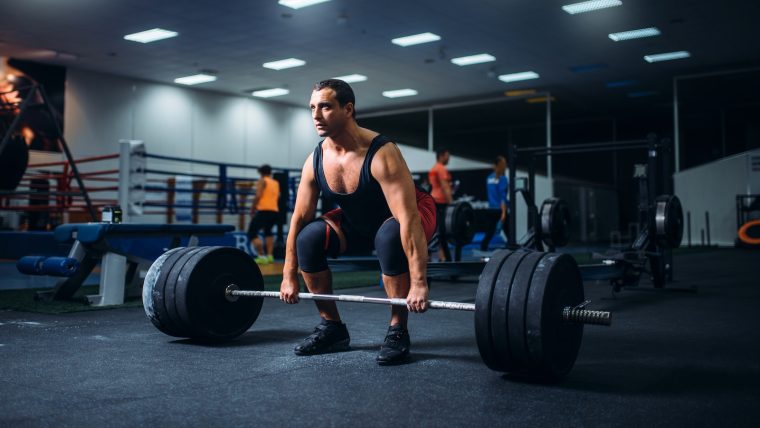
Moreover, bent-over rows can provide you with a leg up at the squat and the bench press. Creating your traps will create a more potent shelf for the bar to leisure on — a big merit when squatting heavy quite a bit. When it’s time to bench, having a powerful higher again will can help you handle a greater arch and stay solid as you decrease the bar towards your chest.
You Need to Make stronger Your Posterior Chain
A vulnerable posterior chain can give a contribution to low again ache and deficient posture. Even supposing it’s just a little of a double-edged sword, the bent-over row help you in that space by way of strengthening key muscular tissues like your spinal erectors and hamstrings — either one of which might be recruited closely to stay in a powerful hip-hinge place.
In keeping with a 2021 assessment on remedy for persistent low again ache, 12-16 weeks of posterior chain resistance coaching had a considerably higher impact than normal workout on ache, stage of incapacity, and muscular power. (1) So, when you shouldn’t attempt to max out at the bent-over row in case you’re looking to construct a wholesome posterior chain, you’ll be able to undoubtedly incorporate it right into a program that incorporates elementary core workout routines like useless insects, fowl canines, and planks.
You Need to Upload General Dimension and Energy
If rising a thick, dense wall of muscle alongside your again issues maximum, make the bent-over row the principle raise for your pull day. A 2009 learn about evaluating 3 row permutations discovered that this workout produced huge activation symmetrically from the higher to decrease again, supporting the speculation of the bent-over row as a go-to motion for including dimension and power. (2) General, a compound motion will contain extra muscle engagement than an isolation workout just like the chest-supported row.
Methods to Do the Chest-Supported Row
To accomplish a chest-supported row, you are going to want a pair of dumbbells and an adjustable weight bench. Converting the incline stage (in addition to your grip) can regulate the way you assault your again exercise by way of stimulating explicit muscular tissues.
Right here’s a step by step information to executing the chest-supported row with the right kind methodology.
- Set your bench to a 45-degree attitude. Clutch your dumbbells and lie chest-down at the bench with the weights by way of your aspects and your fingers going through inward.
- Press your toes into the ground, interact your glutes, and brace your core to create rigidity during your torso.
- Whilst keeping up a impartial backbone and head attitude, retract your shoulder blades and pull your elbows towards the ceiling till they shape a 90-degree attitude.
- Squeeze your upper-back muscular tissues on the most sensible of the motion for one to 2 seconds, then sparsely decrease the weights again to the beginning place. Stay constant rigidity for your abs to give protection to your decrease again as you whole your set.
[Related: How to Do the Pendlay Row]
Methods to Do the Bent-Over Row
The bent-over row calls for simply two items of kit: a barbell and weight plates. If conceivable, use high quality bumper plates so that you don’t have to fret about noise problems. Whilst you’ll be able to additionally carry out this workout with a couple of dumbbells, this breakdown covers easy methods to do the normal barbell bent-over row.
Right here’s a step by step information that can assist you grasp the nuances of this compound motion:
- Stand in the back of a barbell together with your toes shoulder-width aside.
- Hinge on the hips by way of protecting your again immediately and bending your knees somewhat.
- Clutch the bar together with your palms somewhat wider than your shoulders the usage of a pronated (palms-down) grip.
- Have interaction your glutes and core, deadlift the bar off the ground, and lean ahead to shape a 45-degree attitude.
- Whilst protecting a impartial backbone, pull your elbows again till the bar touches your midsection.
- Cling the contraction for one 2nd sooner than slowly decreasing the barbell till your palms are prolonged and the load plates are simply above the bottom.
Advantages of the Chest-Supported Row
The chest-supported row provides quite a lot of intriguing doable for lifters having a look to construct a powerful, outlined again. Let’s read about a couple of key advantages of appearing this workout.
Added Steadiness
The largest good thing about the chest-supported row is definitely being able to teach your again with the integrated balance of a bench. That is nice for each inexperienced persons and complicated lifters who need to succeed in their power and hypertrophy targets with no need to be told an advanced methodology or concern just about as a lot about core or lower-back obstacles.
Takes Benefit of Unilateral Coaching
More straightforward Restoration
The fewer-taxing nature of the chest-supported row makes it more straightforward to recuperate right through and after your exercise. This motion doesn’t call for just about the similar depth or total muscle recruitment as a compound workout just like the bent-over row.
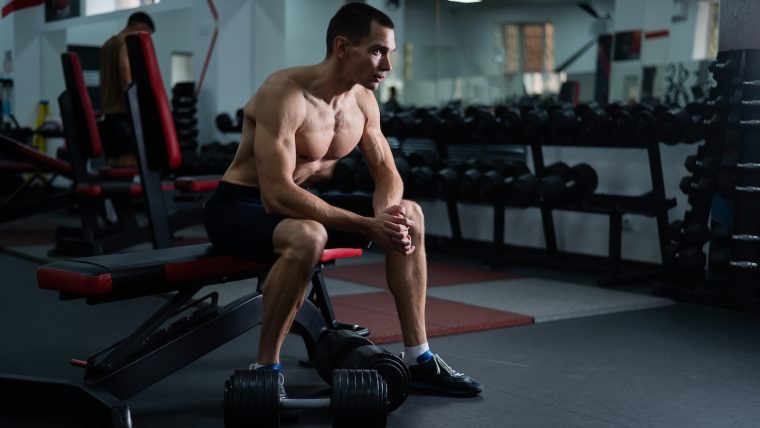
You must have the ability to catch your breath, reset, and be able to move for a minimum of a couple of units sooner than shifting directly to the following workout.
Cons of the Chest-Supported Row
Even supposing added balance and more straightforward restoration stand out as positives, there are some drawbacks to the chest-supported row, together with:
Calls for Extra Apparatus
Sadly, in case you don’t have an adjustable weight bench, you gained’t have the ability to carry out the chest-supported row. Plus, you want a couple of dumbbells (or kettlebells) that supply sufficient of a problem. With out the needful equipment, you’ll have to flip to different again workout routines that don’t require a bench (such because the inverted row) or can also be carried out with out apparatus (like Superman holds).
Much less General Muscle Engagement
There’s a tradeoff for extra balance: much less muscle engagement. Since you’re seated together with your chest towards the bench, your core and legs get just a little of a smash. So despite the fact that the chest-supported row works effectively for hitting your lats, rhomboids, traps, and biceps, it falls in need of the bent-over row in what number of muscle teams it recruits.
Can’t Cross as Heavy
The awkward physique place of the chest-supported row could make it harder to leap up in weight. Running at the usual 45-degree attitude will provide you with sufficient vary of movement to tug and squeeze, however best to a undeniable diploma. Although you’re an skilled lifter with a cast power base, you’ll briefly are aware of it can also be tough to regulate heavier dumbbells and squeeze out blank reps.
Advantages of the Bent-Over Row
Whether or not you’re a bodybuilder, power athlete, or normal fitness center goer, the bent-over row items a wealth of doable muscle- and strength-building advantages.
Carryover to Different Pulling Workout routines
Whether or not it’s pull-ups, deadlifts, or the cable seated row, you’ll be able to put your self in a greater place to accomplish effectively at different pulling workout routines by means of the bent-over row. Construction power and staying power for your lats and traps will lift over to muscle-building workout routines like dumbbell pullovers, lat pulldowns, and face pulls.
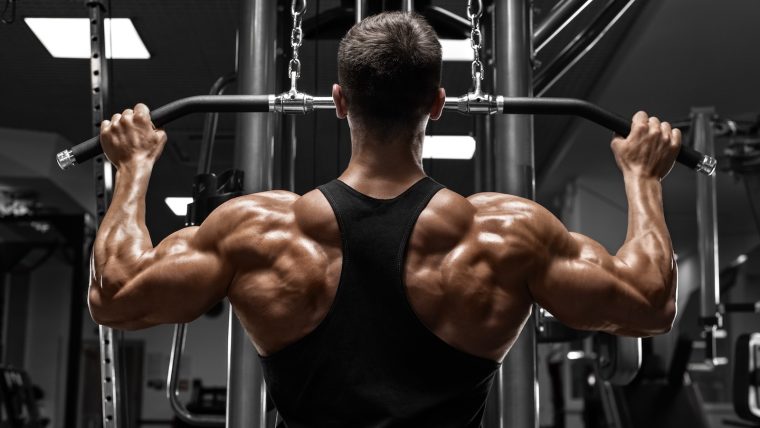
Plus, coaching your glutes, hamstrings, and core to maintain a rowing movement from a bent-over place will provide you with a more potent trunk to maintain no matter deadlift variation you favor.
Compound Motion
In keeping with a 2017 learn about on resistance coaching modalities, multi-joint workout routines are simpler for bettering muscle power and maximal oxygen intake than single-joint ones. (3) That makes one thing just like the barbell bent-over row an ideal bang-for-your-buck selection to your coaching protocol. Now not best does it construct upper-body power, however it additionally stimulates your stomach and leg muscular tissues from begin to end.
Stepped forward Posture
A sedentary way of life may end up in slouched shoulders, vulnerable spinal erectors, and disengaged glutes. The bent-over row can lend a hand counteract that by way of permitting you to support your posterior chain. As you move, you shouldn’t be stunned to look an development for your posture and a discount in decrease again problems.
[Related: 6 Deadlift Benefits Everyone Should Know About]
Cons of the Bent-Over Row
Is the bent-over row the best pull-day motion for you? Sooner than you pencil it into your program, listed below are some cons to believe.
Damage Chance
Even supposing it may be nice for creating explosive energy and upper-back power, the bent-over row can also be unhealthy if performed incorrectly. Keeping up correct shape generally is a main problem, as you will have to cohesively coordinate a couple of muscle teams and joint complexes to can help you hang a loaded hip-hinge place in the course of your set.
Only a slight slippage in shape — akin to rounding your decrease again or somewhat moving your hips to at least one aspect — may end up in a strained muscle, ligament, or extra serious damage. Whether or not you many times carry out the bent-over row incorrectly otherwise you simply lose focal point for one rep, you run the chance of experiencing a setback that might derail your coaching plans.
Grip Energy Barriers
In the event you’re taking the glass-half-empty view, one of the crucial drawbacks to the bent-over row is that your grip power is a proscribing issue. In case your forearms and palms can’t maintain conserving, lifting, and decreasing a loaded barbell many times, you are going to fight to execute the motion successfully or successfully. This will also be the case with the chest-supported row in case you use heavy dumbbells.
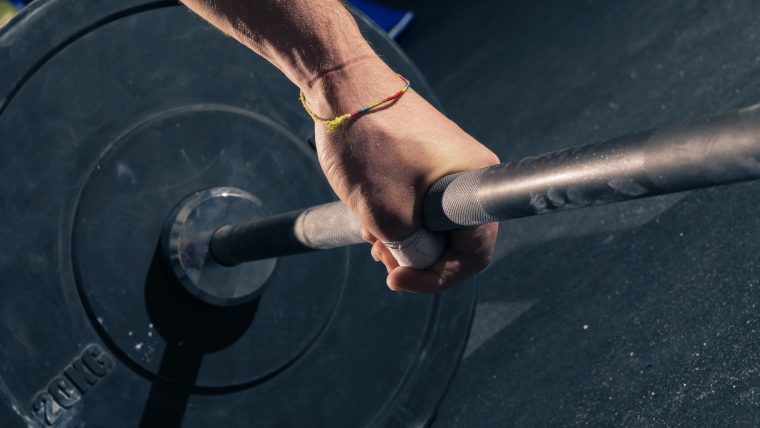
You’ll be able to conquer this drawback by way of constantly operating on grip power workout routines or the usage of lifting straps for reinforce. Whilst the previous will let you get well at bent-over rows and different lifts that require excellent grip power, the latter will can help you paintings with heavier quite a bit by way of protecting your palms securely mounted to the barbell.
Not easy on Decrease Again and Core
Compound workout routines just like the bent-over row necessarily put your whole physique to the check. Whilst there are undoubtedly advantages to recruiting a couple of muscle teams in a single motion, your coaching consultation can briefly cross south in case you don’t have a well-developed core.
Hinging on the hips and last in that near-horizontal place whilst pulling the load vertically puts important rigidity for your decrease again and stomach muscular tissues. As soon as fatigue units in, it’s possible you’ll fight to stay the right kind shape or have to place down the barbell completely.
The use of Momentum
Whilst the chest-supported row forces you to make use of correct shape by way of protecting your chest towards the bench, the freestanding place of the bent-over row opens the door to the usage of momentum to boost the load. In the event you cross too heavy, get fatigued, or lose focal point, it’s simple to cheat the following reps by way of swinging or jerking the barbell somewhat than keeping up rigidity and executing strict, managed reps. Now not best will this restrict the effectiveness of the workout, however it will additionally result in an damage.
Row Until You Develop
The combat between the chest-supported row vs. the bent-over row doesn’t essentially have a winner or a loser. Each workout routines be offering distinctive advantages that may help with sculpting the again of your desires. On the identical time, there are notable variations between the 2 rowing permutations that may make one or the opposite a extra logical selection in keeping with your own targets.
In the long run, your highest wager is to incorporate each the chest-supported and bent-over variations for your exercise plan. That means you’ll be able to pack critical dimension for your body, expand higher posterior chain and grip power, and reap the entire rewards of rowing — one pull at a time.
FAQs
As a result of each and every variation brings distinctive advantages, it’s difficult to mention one is inherently higher. Alternatively, in case you’re eager about gaining essentially the most dimension and power, the bent-over row is the awesome selection. That stated, the chest-supported row remains to be helpful for coaching your upper- and mid-back and is typically more straightforward to accomplish, making it a cast choice for inexperienced persons.
Regardless of their identify variations, each describe the similar workout. Whether or not you name it a chest-supported row or an incline row, you are going to want an adjustable weight bench and a couple of dumbbells to reinforce your back-building efforts.
The best physique place for a bent-over row requires a ahead lean of about 45 levels. Even supposing you’ll be able to cross a little bit additional (round 60 levels is my desire), hinging your hips to 90 levels will put extra rigidity for your posterior chain and might make the workout harder to accomplish many times.
References
- Tataryn, N., Simas, V., Catterall, T., Furness, J., & L. Keogh, J. W. (2021). Posterior-Chain Resistance Coaching In comparison to Basic Workout and Strolling Programmes for the Remedy of Persistent Low Again Ache within the Basic Inhabitants: A Systematic Assessment and Meta-Research. Sports activities Medication – Open, 7.
- Fenwick CM, Brown SH, McGill SM. Comparability of various rowing workout routines: trunk muscle activation and lumbar backbone movement, load, and stiffness. J Energy Cond Res. 2009 Mar;23(2):350-8. doi: 10.1519/JSC.0b013e3181942019. PMID: 19197209.
- Paoli, A., Gentil, P., Moro, T., Marcolin, G., & Bianco, A. (2017). Resistance Coaching with Unmarried vs. Multi-joint Workout routines at Equivalent General Load Quantity: Results on Frame Composition, Cardiorespiratory Health, and Muscle Energy. Frontiers in Body structure, 8.
Featured Symbol: Jasminko Ibrakovic / Shutterstock
